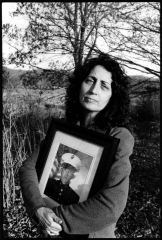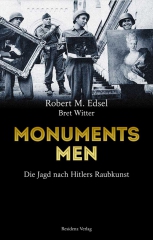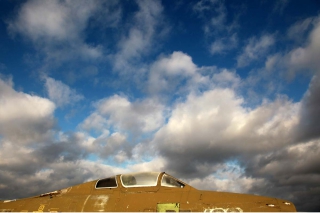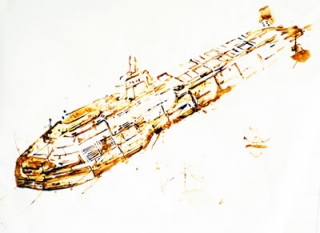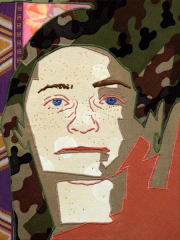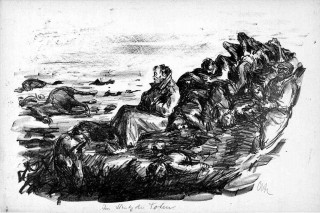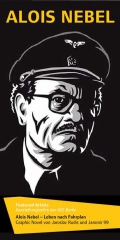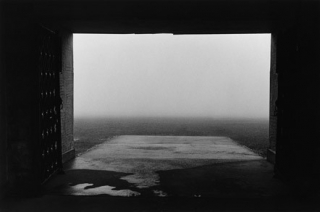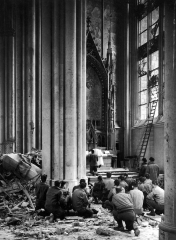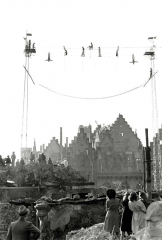From 8 March until 3 April 2013, Berlin-based Willy-Brandt-Haus presents the exhibition One Person Crying: Women and War with photos by Marissa Roth. Since 1984, the Pulitzer Prize laureate (born in 1957 in Los Angeles) is dealing with this issue: back then, she travelled to the Yugoslav homeland of her Jewish grandparents who had been murdered in 1942 by Hungarian Fascists. In 1988, she was assigned by Los Angeles Times to portray Afghan women refugees. The subject remained crucial for her work: One Person Crying: Women and War addresses the effects of war on women within their respective societies. Continue reading “Marissa Roth: One Person Crying – Women and War (Berlin)”
Tag: Deutschland
Robert M. Edsel: Monuments Men (lecture, Berlin/Potsdam)
On 20 and 21 March 2013, Robert M. Edsel presents his book “The Monuments Men” and its thrilling background story in lectures with subsequent talks in Berlin and Potsdam. During the Second World War, the Nazis organised the “greatest theft in history” and stole countless art works from the occupied territories in Europe. The allied special unit from the “Monuments, Fine Arts, and Archives Program” searched for these art treasures. The author Robert M. Edsel is dealing intensively with this art theft and in 2007, he founded the “Monuments Men Foundation for the Preservation of Art”. His book “The Monuments Men” (2009) has already been translated into 19 languages, is recently available in German and is the background for the homonymous film directed by George Clooney with Clooney himself, Cate Blanchett, Daniel Craig, Matt Damon, Jean Dujardin and John Goodman that will be made this year.
Continue reading “Robert M. Edsel: Monuments Men (lecture, Berlin/Potsdam)”
Martin Bayer: grounded
Photographer Martin Bayer (educated at Lette-Verein Berlin) addresses in his series grounded1 of decommissioned military aircraft the perception of history and war, but also the aestheticisation of weapons. Detached from their historic context, the planes appear as objects or even sculptural. Neither the country of provenance, nor their operating period are discernible: was it an “attacker” or a “defender”, regarding our own classifications? Each war produces history and its own myths – grounded puts them in the background, making room for the viewers’ own associations.
 Continue reading “Martin Bayer: grounded”
Continue reading “Martin Bayer: grounded”
- crashed, having a grounding (aircraft, pilot), fixed, earthed, but also sensible, justified ↩
Lisa Glauer: “…later, she will build nuclear vessels” (OKK Berlin)
From 22 February until 3 March 2013, Berlin-based gallery Organ kritischer Kunst (OKK, organ of critical arts) presents the exhibition “…später baut sie Atomschiffe” (…later, she will build nuclear vessels” with works by Lisa Glauer. The exhibition will be opened with the performance “experimental production of evidence by visualisation”. Lisa Glauer uses breast milk as material for her works. This project is part of her PhD dissertation on Art and Design at Bauhaus University Weimar.
 Continue reading “Lisa Glauer: “…later, she will build nuclear vessels” (OKK Berlin)”
Continue reading “Lisa Glauer: “…later, she will build nuclear vessels” (OKK Berlin)”
2 + 2: Phoenix Chemnitz – A Peace Day Exhibition (Chemnitzer Künstlerbund)
On 12 February 2013, the exhibition “2 + 2: Phoenix Chemnitz” will open on the premises of Chemnitzer Künstlerbund (association of Chemnitz’s artists). In this established format, two local and two external artists meet to address a specific subject. This time, the Chemnitz Friedenstag (Chemnitz Peace Day) is this issue: on 5 March 1945, Chemnitz was severly damaged – more than 2,100 people died in this bombing. How can this central event be remembered? What has contemporary art to say on war? Peggy Albrecht (* 1974) and Rose-Marie Güttler (* 1978) are the two local artists in this show, while Jan Bejšovec (* 1975, Konfliktstoff) and Martin Bayer (* 1971, Wartist) from Berlin provide external perspectives. Continue reading “2 + 2: Phoenix Chemnitz – A Peace Day Exhibition (Chemnitzer Künstlerbund)”
Otto Herrmann: The Damned (E.M.Remarque-Friedenszentrum, Osnabrück)
On 31 Januar 2013, the exhibition “Die Verdammten” (The Damned) with lithographs by Otto Herrmann (1899-1995) will be opened at Erich Maria Remarque-Friedenszentrum (E.M.Remarque Peace Centre) in Osnabrück. The cycle was made in the late 1940s and thus immediately after the Second World War. The artist was inspired by Theodor Plievier’s novel “Stalingrad”. 70years after the end of the Battle of Stalingrad, the majority of these works will finally be presented to the public.
 Continue reading “Otto Herrmann: The Damned (E.M.Remarque-Friedenszentrum, Osnabrück)”
Continue reading “Otto Herrmann: The Damned (E.M.Remarque-Friedenszentrum, Osnabrück)”
Alois Nebel – Graphic Novel by Jaroslav Rudiš and Jaromir 99 (AID Berlin + Czech Centre Berlin)
On 12 January 2013, the exhibition “Alois Nebel – Graphic Novel by Jaroslav Rudiš and Jaromir 99” will open on two parallel locations: Akademie für Illustration und Design Berlin (AID Berlin) and Tschechisches Zentrum Berlin (Czech Centre Berlin). Jaroslav Rudiš and Jaromír “Jaromir 99” Švejdík show the origination process of their successful three-volume graphic novel about the life of train director Alois Nebel (2003-2005), that has been made into a film in 2011 by Tomáš Luňák (and was awarded the European Film Award 2012 as best animated feature film. “Alois Nebel” addresses the issue of the forced displacement of Sudeten-Germans from Czechoslovakia after the end of the Second World War.
Jaromir 99 (* 1963) lives in Prague as comic artist, painter and musician. Jaroslav Rudiš (* 1972) works as author, screenwriter and playwright; he writes in Czech and German and lives in the Czech Republic and Germany. Continue reading “Alois Nebel – Graphic Novel by Jaroslav Rudiš and Jaromir 99 (AID Berlin + Czech Centre Berlin)”
Erik Schiemann: The Day is Coming (Sprechsaal, Berlin)
From 11 January to 10 March, Sprechsaal in Berlin presents photos by Erik Schiemann. The artist, born in 1963, is dedicating himself to the people, the traces and atmospheres in locations such as Auschwitz, Ravensbrück, Buchenwald and Belzec. His pictures show former inmates and young people, damaged lives and wounded landscapes. A selection of some 30 pictures from a series of 60 black and white photos will be shown: portraits, thoughts and landscapes from the past seven years, supplemented with parts of Schiemann’s work “c’était son monde” from 1995.
 Continue reading “Erik Schiemann: The Day is Coming (Sprechsaal, Berlin)”
Continue reading “Erik Schiemann: The Day is Coming (Sprechsaal, Berlin)”
Margaret Bourke-White: Photographs 1930-1945 (Martin-Gropius-Bau, Berlin)
From 18 January until 14 April 2013, Martin-Gropius-Bau Berlin presents the exhibition “Photographs 1930-1945” with numerous works by American Margaret Bourke-White (1904-1971). In a male-dominated world, she successfully fought for her position: she shot the title of the very first Life magazine of November 1936 and continued to work for this and other magazines. Not the least her pictures from World War II became famous throughout the world.
 Continue reading “Margaret Bourke-White: Photographs 1930-1945 (Martin-Gropius-Bau, Berlin)”
Continue reading “Margaret Bourke-White: Photographs 1930-1945 (Martin-Gropius-Bau, Berlin)”
Tony Vaccaro: Retrospective – 70 Years of Photography (Willy-Brandt-Haus Berlin)
From 22 November 2012 until 27 January 2013, Freundeskreis Willy-Brandt-Haus Berlin presents a retrospective with 100 photos spanning seven decades by the US photographer Tony Vaccaro. Not the least in Germany, Vaccaro – who will turn 90 years on 20 December this year – is known best for his pictures from the Second World War and post-war Germany: since the Normandy landings in 1944, he fought in the European theatre of war. Until 1949, he worked for Weekend, a supplement to the magazine Stars and Stripes. After his return to the USA, he was photographer for magazines such as Life, Look and Flair.
Continue reading “Tony Vaccaro: Retrospective – 70 Years of Photography (Willy-Brandt-Haus Berlin)”
